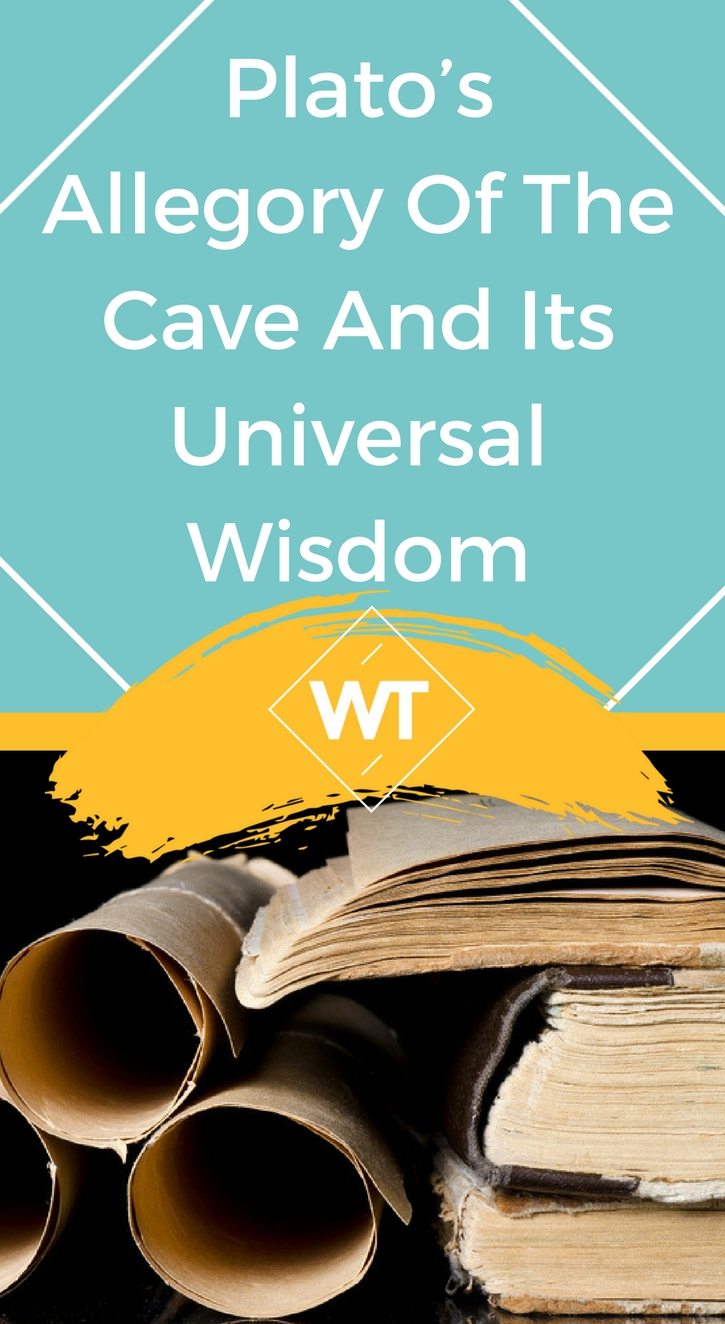Plato’s Allegory Of The Cave And Its Universal Wisdom

You can really picture it in your mind. It’s an early evening in Athens and a small crowd of contemporary free thinkers, philosophers, skeptics, cynics, intellectuals, and rebels of the time gather around for a sitting at the academy.
They all have different reasons for being there but one thing stands in common, they want to hear the wisest and most brilliant minds of the time speak. Plato was definitely one of them as was Socrates before him and Aristotle after him, a lineage of master and student that left a legacy in western philosophical thinking for centuries beyond.
It’s around 347B.C and the political and philosophical climate is quite fervent. Intellectuals were taking public debate and oratory quite seriously at the time.
As was the style in those days, especially in Plato’s own works, dialogue and argumentation were at the forefront of the whole spectacle. All of Plato’s works were in fact called dialectical, meaning that instead of talking about an idea he wanted to convey, he would write about two people, usually two known figures of the time, in dialogue, arguing and debating two different points of view.
This dialogue style would normally entail a philosopher, for example Socrates, asking questions to another and through his questions he would make the other come to the conclusion or ‘a-ha moment’ by himself instead of lecturing or pontificating to him.
This philosophical style was called ‘midwifery’ because the role of the philosopher was to assist the other in giving birth to an idea or point of view without forcing it or imposing one’s point of view.
Another very important hallmark in Plato’s work was his brilliant use of allegories, typically stories that reveal a hidden and profound meaning.
Allegories can be very powerful tools to bring forward a realization. One of the most famous and timeless allegory in Plato’s work is the allegory of the cave which goes something along these lines:
A group of people were living as prisoners inside a cave. The prisoners were chained to a wall inside the cave all their lives. The only thing they could see were shadows being cast on the wall in front of them by objects moving in front of a fire behind them.
The dancing shadows were their only reality and they gave names and labeled the different shadow forms. He then mentions how the philosopher (according to Plato) is like that prisoner who was set free and went to the world outside the cave.
He quickly realised that what he and his inmates were seeing was only a mere shadow of reality, distorted forms dancing on a wall. He went back to explain this revelation to the ones still imprisoned in the cave but they could not fathom what he was talking about. Soon he quickly became labelled as delusional, cranky and out of his mind.
The allegory has, of course, much resonance with real life and is so timeless in its power and applicability. At the heart of the allegory is the idea that we are seeing and interpreting life through a very narrow part of our consciousness (the cave) and so what we are seeing are only mere shadow forms of reality.
All the prisoners share the same reality: the shadows on the wall. This is what we can call consensual reality, or to use a more fancy word, the social matrix. The shadows on the wall are a metaphor for our consensual reality—the shared fears, illusions, beliefs, perceptions, values, and judgments.
This is what we take to be our solid reality but we cannot see how reality is actually so illusory and shadowy because, like the prisoners, we have never seen the world outside. We are still stuck in the cave of our consciousness.
The other important part has to do with the philosopher who, once free, could discover the reality outside the consensual reality, the Neo outside of The Matrix so to speak. He saw that his former reality is made up of only forms that are illusory and transient.
He (the philosopher) now sees reality by means of the sunlight outside the cave rather than the shadow projections from the fire. He is ‘enlightened’ and comes back to the cave to awaken the others from the dream. But not having experienced the same reality as the philosopher, they cannot fathom what he is raving about. The figure of the philosopher can also be replaced by the visionary, raver, forward-thinker, ‘mad man,’ seer, or truth seeker.
Even at the time of Plato, this whole idea was already an archetype. The one breaking free from the chains of ignorance (of his reality) and from the herd mentality to see the light of the truth ‘outside,’ but then returns to his community only to be stoned, ridiculed or scoffed away as the poor lunatic. The story is almost universal and probably already was for centuries—or even millennia—before Plato’s time.
More importantly, the allegory summons up so much meaning to us nowadays. It still makes perfect sense. We are still dragged down by the ‘reality’ of the shadows. We need to come out of the ‘social matrix’ as did the philosopher by transcending the narrow perceptions of our minds cobbled together with false beliefs and judgments.
Plato also describes the people inside the cavern as prisoners chained to a wall. The use of the language here is not arbitrary or casual, but purposeful.
We are imprisoned by our way of thinking, by our mindset, and by our consensual reality. The ‘mad man’ or the visionary was bold enough to free himself/herself from the chains and step out into the light without fear. More than that, he/she returns to the cave to tell the tale and help others without fear of being disapproved, ridiculed or scorned. This breaking free from the chains of socially-transmitted fear and judgment is the ultimate freedom, the ultimate way out of the social conditioning of the ‘matrix.’
So next time you meet a ‘mad man,’ raving about the ‘light outside,’ think twice before sending him off. He might be showing you a way out of the cave.









Leave a Reply